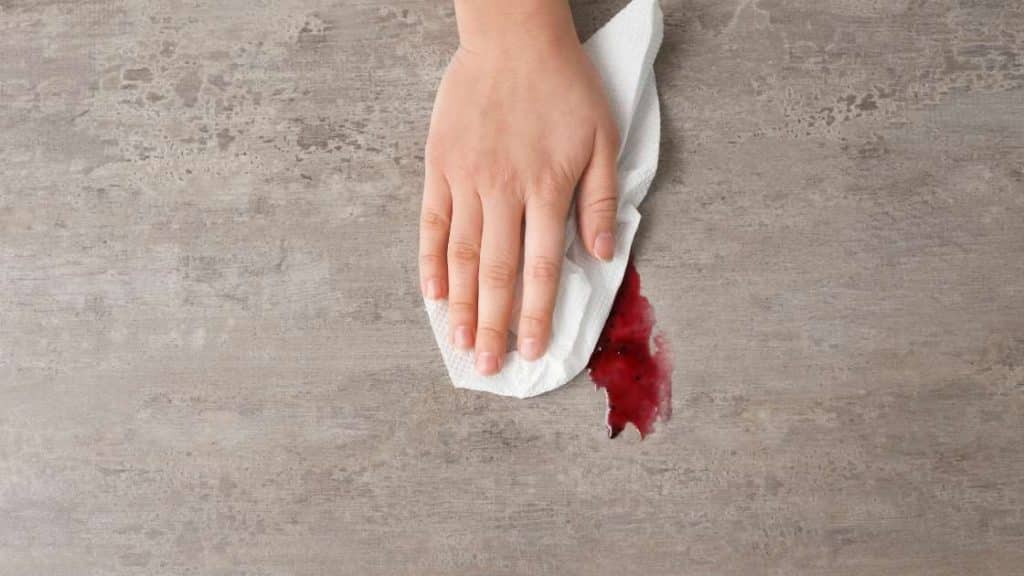To clean dining table oil stains, promptly blot the area with a paper towel and apply a mixture of baking soda and dish soap. Gently scrub the solution into the stain and then wipe it clean with a damp cloth.
When it comes to preserving the beauty of your dining table, addressing oil stains promptly is key. How to clean dining table oil stains becomes crucial, especially if your table holds sentimental or high monetary value.
In busy households where the dining table serves different purposes, from meals to work and play, spills are inevitable.
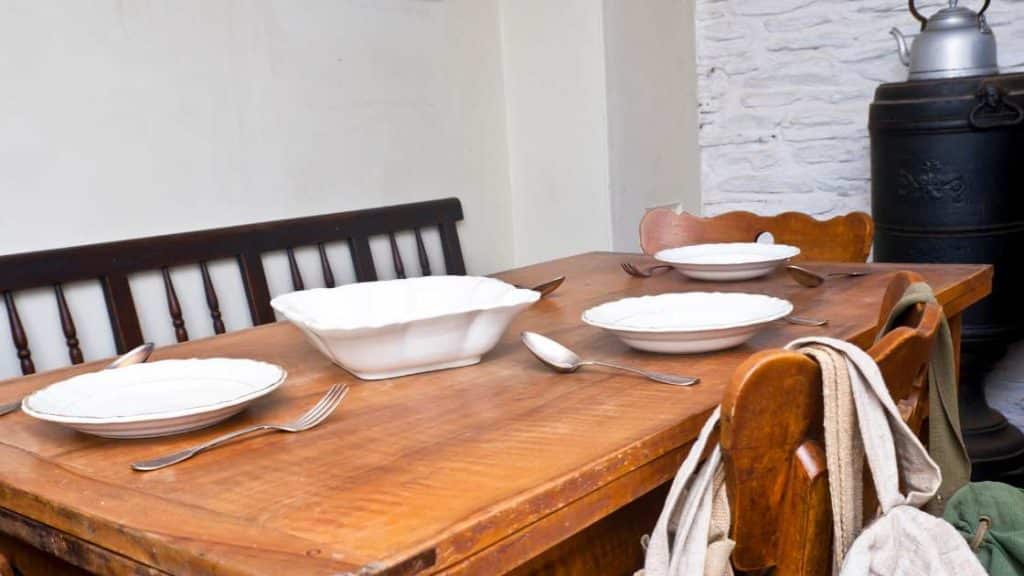
To effectively manage stains, a quick response is essential before the oil seeps into the wood, marble, or glass surface. Home remedies like baking soda, dish soap, or vinegar can work wonders in tackling these stubborn spots.
Acting swiftly not only ensures a stain-free dining spot but also helps maintain the overall aesthetic of your home, while simultaneously extending the life of your furniture.
Make routine care and the correct cleaning methods a habit, turning the task of keeping your dining table pristine into a manageable one.
Introduction To Dining Table Maintenance
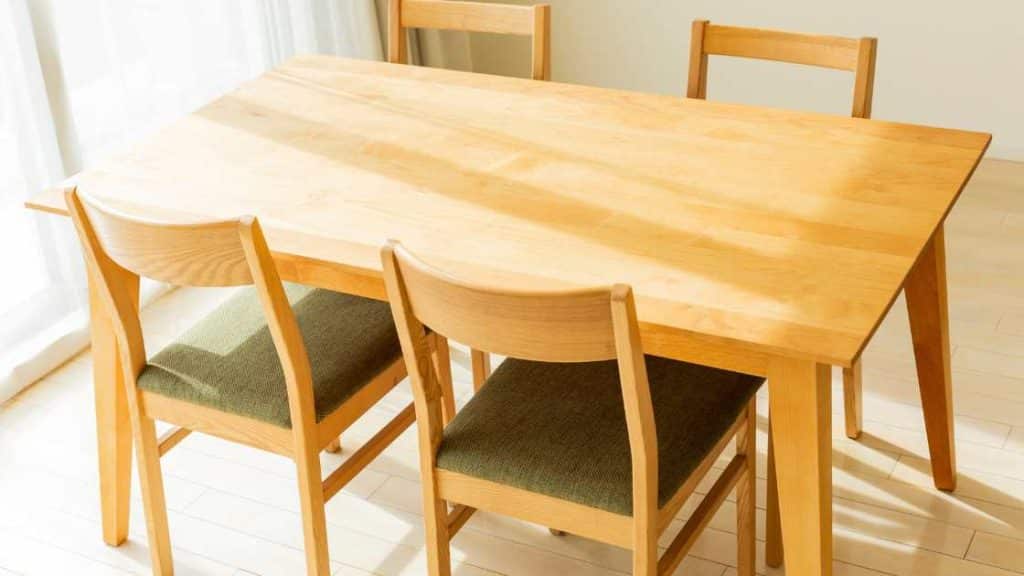
Maintaining a dining table ensures it remains a centerpiece for years. It’s more than just a place for meals; it’s where memories linger. Regular care keeps it spotless and inviting. Let’s learn to tackle a familiar foe: oil stains.
The Importance of Keeping Your Dining Table Clean
A pristine dining table sets the scene for delightful dinners. A clean surface is hygienic and extends your table’s life. Shield it from damage and maintain its sheen with regular cleaning rituals.
- Prevent permanent damage
- Avoid bacteria and germs
- Improve the room’s ambiance
Common Types of Stains on Dining Tables
Tables encounter many stains daily. Knowing them helps target your cleaning strategy.
| Type of Stain | Source | Cleaning Difficulty |
|---|---|---|
| Oil Stains | Cooking, Dressings | Medium |
| Water Rings | Glasses, Vases | Low |
| Ink Marks | Pens, Markers | High |
Awareness Oil Stains
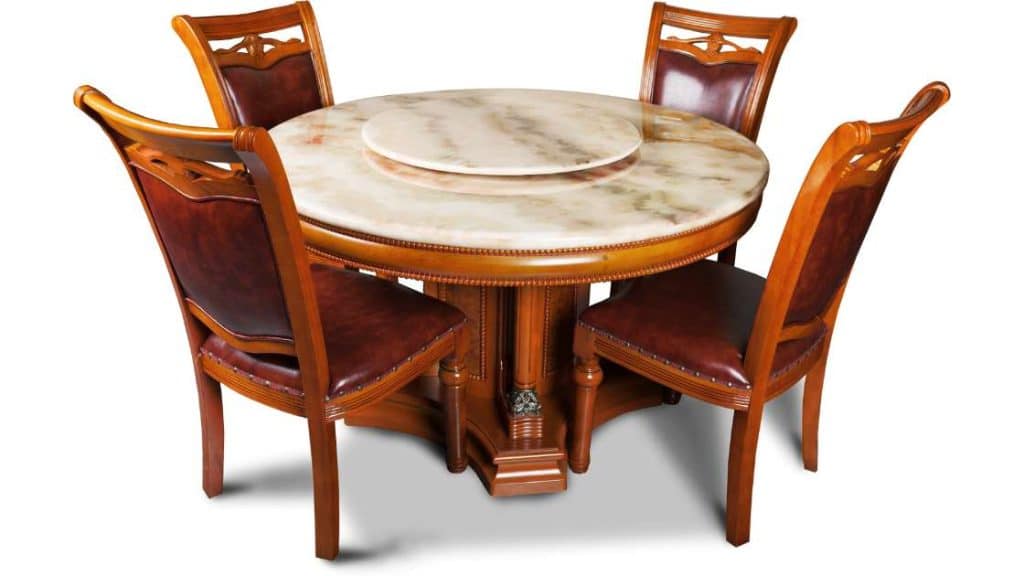
Your dining table is not just where meals are devoured; it’s the centerpiece of your home. An ugly oil stain can ruin its beauty. Let’s understand these stubborn stains before banishing them forever.
How Oil Stains Occur On Dining Tables
Oil stains sneak onto dining tables from different sources. A dribble of salad dressing or a splash of cooking oil during a family feast can be the culprits.
They can even arise from greasy fingers during a quick snack. Knowing how they form is key to effective cleaning.
The Chemistry Of Oil Stains And Their Impact On Different Surfaces
Oil’s hydrophobic nature means it repels water and clings to your table’s surface. This creates a challenging opponent for usual cleaning methods.
- On wooden surfaces, oil can seep into the grain.
- Glass tables show smudges visibly.
- Marble tops can absorb oil, leading to darkened spots.
Treating each surface requires specific strategies for removing the greasy menace effectively.
Preventative Measures For Dining Table Stains
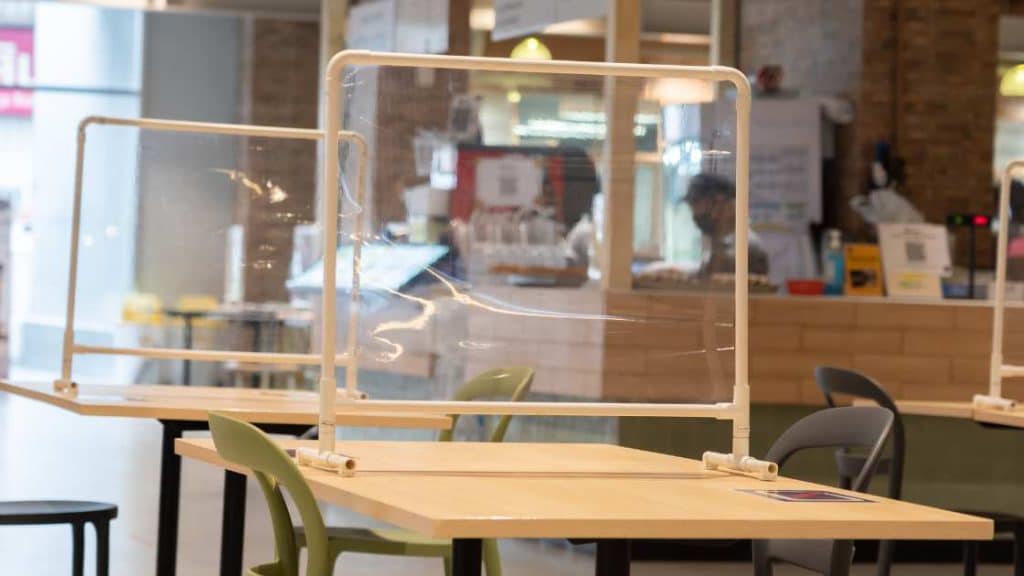
Protecting your dining table from oil stains is just as important as knowing how to remove them. Simple steps can keep your table spotless.
Let’s Sink into how tablecloths, placemats, and mindful dining habits can save you from unwanted stains.
Using Tablecloths And Placemats To Protect Your Table
A tablecloth acts like a shield for your dining table. Pick one that’s easy to wash or wipe clean. Placemats offer individual protection. They catch spills and crumbs during meals. Here are some options:
- Vinyl tablecloths – Wipe-clean, ideal for families with kids.
- Fabric tablecloths – Choose machine-washable materials.
- Plastic placemats – Simple to rinse under the tap.
- Fabric placemats – Look for stain-resistant options.
Use these barriers daily. Switch them out after meals or spills. This keeps your table looking fresh.
Best Practices For Preventing Oil Stains During Meals

Developing good mealtime habits is key to stain prevention. Below are the best practices to follow:
- Use coasters – Keep drinks from causing rings.
- Wipe spills immediately – Quick action prevents stains.
- Avoid hot items – Use trivets for pots and pans.
- Serve carefully – Pour sauces and dressings with care.
- Teach kids – Show them how to avoid messes.
Regular cleaning is a must. Wipe your table daily. Give it a deep clean weekly. These habits ensure a long-lasting, pristine dining surface.
Immediate Action Against Fresh Oil Stains
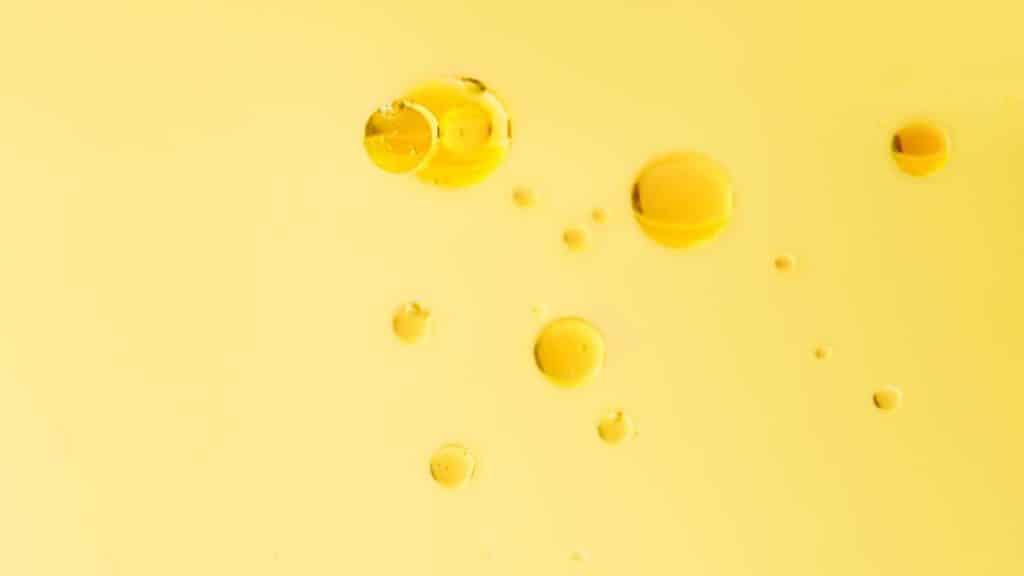
In the battle against dining table stains, fast action is key. Oil spill? Don’t despair. Here, Find the must-know tips to tackle those greasy marks quickly and with ease. Let’s Sink into the art of prompt and effective oil stain removal.
The First Steps To Take When An Oil Spill Occurs
Time is of the essence when dealing with a fresh oil stain. Follow these steps:
- Blot the spill: Use a paper towel or clean cloth to gently blot the oil. Avoid rubbing; you don’t want to spread the stain.
- Sprinkle an absorbent: A dash of cornstarch or baking soda on the oil can work wonders. Let it set for a few minutes.
- Wait and wipe: After ten minutes, scoop up the powder and oil residue with a spoon.
Home Remedies For Fresh Oil Stains
Common household items can be your best friends in stain removal. Try these simple solutions:
| Item | Method |
|---|---|
| Dish Soap | Apply directly onto the stain. Gently rub in. Rinse with warm water. |
| White Vinegar | Mix equal parts vinegar and water. Apply to stain. Blot until clean. |
| Baking Soda | Combine with water to form a paste. Cover the stain. Wipe after five minutes. |
Each remedy uses safe, non-toxic ingredients, perfect for quick fixes that don’t harm your table’s finish.
Commercial Cleaners And Their Effectiveness

Commercial Cleaners and Their Effectiveness offer a quick solution to tough oil stains on your dining table. Selecting the right cleaner can mean the difference between a spotless table and a cleaning failure.
Let’s Investigate chemical cleaners and their capacity to battle those stubborn oil marks.
The Pros And Cons Of Using Chemical Cleaners
Chemical cleaners boast powerful ingredients. These components can lift oil stains effortlessly. Their convenience is unmatched.
They sometimes contain harsh substances. These might harm your dining table’s finish. They could also pose risks to your health and the environment.
- Pros:
- Effective at removing oil stains.
- Fast-acting, saving time and effort.
- Wide availability in stores and online.
- Cons:
- Potential damage to table finishes.
- Health risks from fumes and skin contact.
- Environmental impact from chemicals.
Review Of Popular Commercial Cleaners For Oil Stain Removal
A variety of commercial cleaners claim to erase oil stains with ease. In this review, we focus on the top choices that deliver results.
| Cleaner Name | Effectiveness | Table Safety | Eco-Friendliness |
|---|---|---|---|
| Brand A | High | Safe with caution | Low |
| Brand B | Medium | Varies | Medium |
| Brand C | High | High | High |
Remember to always follow the instructions. Test any cleaner in a small, hidden area before applying it fully. This ensures your table remains unharmed. Also, consider cleaners marked as eco-friendly. They help reduce harmful effects on the environment.
Natural And Eco-friendly Cleaning Solutions
Natural and Eco-Friendly Cleaning Solutions offer a safe way to tackle oil stains on your dining table. These solutions protect your family’s health and the environment.
They easily cut through grease without harsh chemicals. You can make them with simple items from your kitchen or pantry.
Homemade Cleaning Solutions Using Household Items
Common household items can become effective cleaners.
- Baking Soda and Vinegar: Create a paste with equal parts of baking soda and vinegar. Apply to the stain, let it sit for 5 minutes, and wipe clean.
- Lemon Juice: Lemon juice’s natural acidity helps break down oil. Mix with water, apply to the stain, and rinse after a few minutes.
- Cornstarch: Cornstarch absorbs oil. Sprinkle over the stain, wait for it to absorb the oil, and vacuum it up.
The Role Of Eco-friendly Cleaners In Safeguarding Your Family’s Health
Eco-friendly cleaners contain natural, non-toxic substances.
These cleaners contribute to a healthier home by reducing allergens and chemical exposure. Using them ensures that your loved ones are not ingesting harmful residues.
They promote clean indoor air quality and reduce environmental impact. Choose eco-friendly cleaning brands with biodegradable ingredients or make your own cleaners using the tips above.
Step-by-step Guide To Cleaning Oil Stains
Welcome to your go-to guide for tackling one of the toughest dining dilemmas: oil stains on your beloved table. Wave goodbye to greasy reminders of past meals with our easy-to-follow steps. Let the cleanup commence!
Detailed Instructions For Removing Old Oil Stains
Act quickly! The longer a stain sits, the harder it is to remove. But don’t worry. Even settled stains meet their match with these steps:
- Dab. Gently press a paper towel onto the oil. Avoid rubbing! This can worsen the stain.
- Dust with powder. Cover the oil with absorbent such as baking soda. Wait 10 minutes. The powder lifts the oil.
- Scrape away. Use a scraper to gently remove the powder.
- Apply dish soap. Rub a dab of soap into the stain. Use a soft brush in a circular motion.
- Wipe clean. Use a damp cloth to remove any remaining soap and oil.
Stubborn stains may need a second treatment or a special cleaner designed for the material.
Special Considerations For Different Table Materials
Not all tables are the same. Here’s a quick guide to treat yours right:
| Material | Clean-up Tips |
|---|---|
| Wood | Use oil-based cleaners. Avoid water. It can warp wood. |
| Glass | Vinegar and water mix works wonders. No streaks! |
| Marble | No acid! Use a mild, pH-neutral soap. |
| Metal | Mild soap and water. Dry well to prevent rust. |
| Laminate | Baking soda and water paste. Wipe off gently. |
Tip: Always test cleaners in a small area first. Each table is unique. Treat yours with care to last for years.
Advanced Techniques For Persistent Oil Stains
Welcome to the world of cleaning woes where stubborn oil stains on your dining table can be a common frustration. But fear not, advanced techniques are available to tackle these unwelcome guests.
In this section, we will Investigate some professional methods that promise to leave your tabletop spotless and discuss how to determine when it’s time to call in the experts.
Let’s Sink into the nitty-gritty of banishing those stubborn stains!
Professional Methods For Tough Stain Removal
To start, prepare by wiping off any excess oil with a paper towel. Do not rub the stain, as it can spread the oil further.
- Apply a poultice: Create a paste of baking soda and water. Spread it over the stain, and cover it with plastic wrap overnight. The poultice draws out the oil.
- Use a specific oil stain remover: Products designed for oil stain removal work wonders. Spread the solution over the stain and follow the manufacturer’s instructions.
- Consider wood-safe bleach: For deep-set stains, mild wood bleach can be effective. Test on a small area first to ensure it doesn’t damage the finish.
Remember to always patch-test a small, hidden section of your table before applying these techniques to the entire stain.
When To Seek Professional Cleaning Services
There are times when a DIY approach might not cut it. If you’ve tried the above methods and the stain persists, it could be time to contact professionals. Here are some signals:
- Stain size: Large or deeply penetrated stains may require professional tools and solutions.
- Wood type: Certain woods, like cherry or mahogany, can be delicate and prone to damage if treated incorrectly.
- Value: If the dining table is antique or expensive, risking further damage might not be worth a DIY attempt.
Safety and efficiency are the top reasons to seek professional cleaning services. They have the skills and products to treat the stain without harm to your valuable furniture.
Maintaining Your Table Post-cleaning
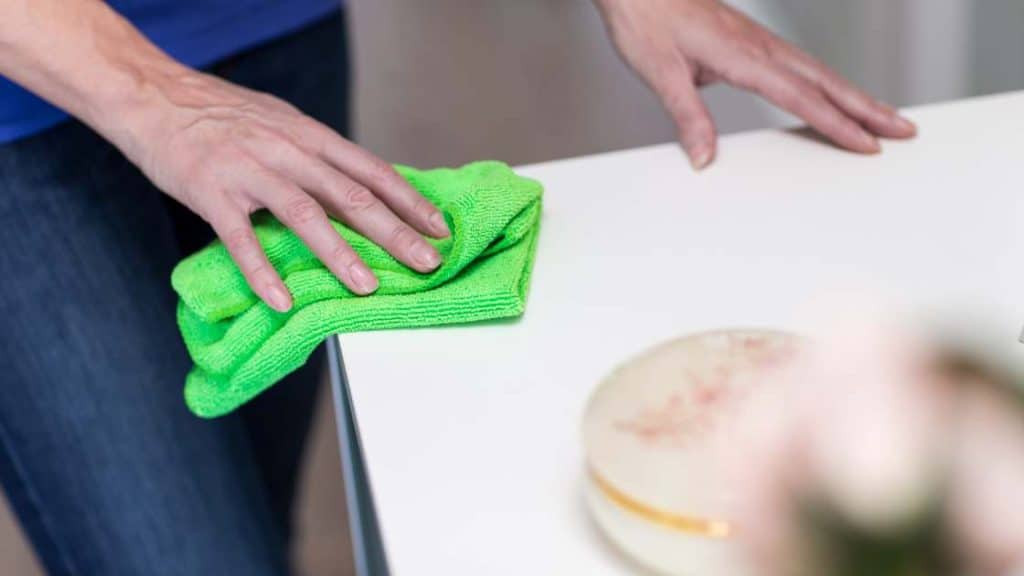
After removing those stubborn oil stains from your dining table, it’s vital to keep it looking pristine. Daily care and smart preventive measures can safeguard your table’s surface. Let’s Investigate how.
Protective Finishes And Polishes To Prevent Future Stains
Seal the deal with a finish to protect your table. Here are some finishes and polishes that help:
- Varnish: It creates a durable layer.
- Wax: It buffs up a protective sheen.
- Oil: It improves the wood’s natural beauty.
Apply the finish of your choice using a clean cloth. Follow the product directions for the best results. Regular application ensures a shield against future spills and marks.
Routine Cleaning Tips To Keep Your Table Looking New
Keep your dining table in top shape with daily habits. Clean gently but effectively:
- Wipe up spills immediately with a soft cloth.
- Use a dry brush to remove crumbs.
- Dampen a cloth with warm water for a quick clean.
- Dry off the table after cleaning to avoid moisture damage.
By following these simple care instructions, your table will continue to look as good as the day you removed those unsightly oil stains.
Troubleshooting Common Issues In Stain Removal

Spills happen, and where there’s food, there’s bound to be oil stains. Finding a slick mark on your dining table can dampen your spirits. Fear not! Effective stain removal is about having the right tools and knowledge.
If you’ve applied vinegar, baking soda, or any other DIY remedy and found yourself facing a persisting stain, it’s time to Sink deeper into solving these common setbacks. Here’s the plan to restore your table’s pristine look.
Addressing Discoloration And Damage From Cleaning
Boldness in cleaning often leads to unintended consequences. If discoloration or damaged surfaces from your cleaning spree, don’t despair!
- Identify the Finish: Further attempts should align with the table’s finish. Is it lacquer, varnish, or oil? Each requires a unique approach.
- Gentle Buffing: Sometimes a soft cloth can revive the initial glory of the finish, subtly blending away discoloration.
- Spot Treatment: With a cotton swab, tend to the specific areas with mild cleaning solutions. Quick action is the best policy.
What To Do When Diy Solutions Don’t Work
It’s disheartening to see oil stains stand their ground against your DIY efforts. Time to level up!
- Assess and Act: Review the stain characteristics—size, deepness, and duration.
- Specialty Cleaners: Seek a cleaner designed for oil stain removal, one that’s friendly to your table’s surface.
- Professional Help: Sometimes, it takes a professional touch to undo the stubborn blemish that clings to your table.
Patience and precision play a central role. Refrain from resorting to harsh chemicals too quickly. These can damage the table more so than the original stain.
Embracing Cleanliness And Longevity
Keeping a dining table pristine improve its life and appeal. Oil stains can shorten furniture lifespan.
Regular cleaning not only maintains its look but also its function. Embracing cleanliness equals embracing longevity for your dining furniture.
Key Takeaways For Maintaining An Oil-free Dining Table
- Act quickly on spills to prevent stains.
- Use gentle cleaning solutions like dish soap and water.
- Avoid harsh chemicals that can damage the table’s finish.
- Maintain a routine to wipe down surfaces regularly.
- Protect the table with placemats or tablecloths during use.
The Value Of Consistency In Furniture Care
Consistent care keeps the furniture in top shape. It ensures lasting beauty and functionality. A clean table invites happy mealtimes and gathers. Stick to a cleaning schedule for the best results.
| Cleaning Frequency | Tasks |
|---|---|
| Daily | Wipe with a damp cloth |
| Weekly | Soap solution and deep clean |
| Monthly | Polish and inspect for damage |
Frequently Asked Questions Of How To Clean Dining Table Oil Stains
How Can I Remove Oil Stains From Wood?
To remove oil stains from a wooden dining table, apply a mixture of baking soda and water to the stain. Let it sit for a few minutes, then gently rub the area before wiping it clean with a damp cloth.
The baking soda absorbs the oil and lifts the stain.
Are There Any Household Items That Clean Oil Spills?
Yes, household items like baking soda, cornstarch, and white vinegar are effective for cleaning oil spills. Baking soda and cornstarch can be sprinkled on the stain to absorb the oil. White vinegar, diluted with water, can break down the oil residue when applied and wiped off.
What’s The Best Way To Protect Dining Tables From Oil?
To protect dining tables from oil, use coasters or placemats during meals. Consider applying a sealant or tablecloth for added protection. Regular maintenance with suitable wood cleaning products also helps prevent oil stains from penetrating the wood surface.
Does Dish Soap Remove Oil Stains On Tables?
Dish soap can remove oil stains from tables as it is designed to cut through grease. Apply a small amount of dish soap to the stain, let it sit for a few minutes, then gently scrub with a soft brush before wiping the area with a damp cloth.
What is the fastest way to remove oil stains?
The quickest method to remove oil stains is by applying a mixture of dish soap and hot water to the affected area, followed by scrubbing with a brush or cloth. Additionally, using an absorbent material such as baking soda or cornstarch can help lift and absorb the oil before cleaning.
Conclusion
Tackling oil stains on your dining table need not be a hassle. With the right tools and techniques, such as baking soda, vinegar, or dish soap, you can restore your table’s pristine look. Remember, prompt action and regular maintenance will keep those unsightly spots at bay.
Happy cleaning!

